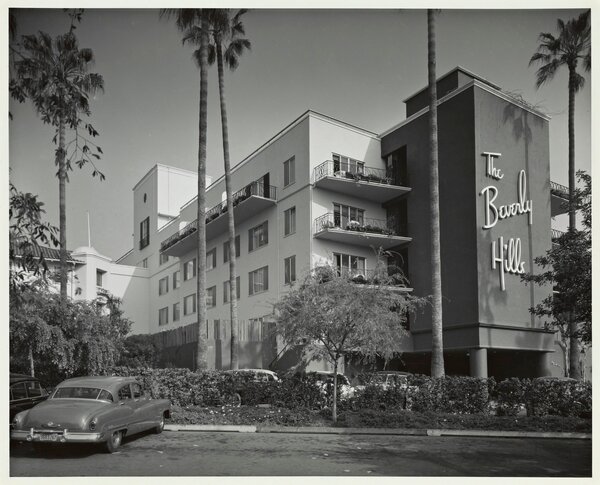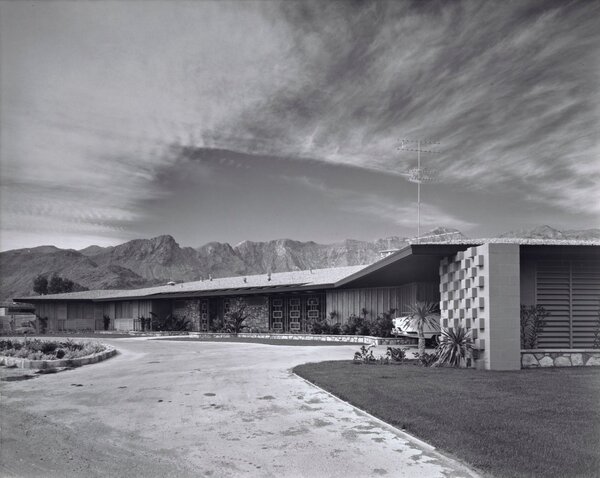An important new book highlights the stories of Black pioneers from the past century whose major contributions have been widely dismissed or forgotten.
When Charlene Prempeh’s new book, Now You See Me: An Introduction to 100 Years of Black Design, opens, it’s with an anecdote about Ann Lowe. As part of a team working on the North Face X Gucci collaboration, the writer and founder of A Vibe Called Tech creative agency was helping put together a list of pioneering Black creatives. Someone threw out Lowe’s name, noting that she was "the woman who designed Jackie Kennedy’s wedding dress." Prempeh, taken aback, was surprised she’d never heard of her, even given her passing familiarity with Kennedy’s history. "I felt like I should know the name," Prempeh writes. ‘How come I’ve never heard of her?’ spilled from my mouth before I had time to scoop it back in. A pause, then ironic laughter followed by a response delivered in chorus: ‘Why do you think?’"
For decades, Prempeh continues, "Black designers have been sheathed in an invisible cloak," erased from the narratives about design and creation, not just in fashion but also in architecture and graphic design. In Now You See Me, Prempeh attempts to rectify at least some of that suppression, illuminating the stories and lives of some of the great Black designers of the last 100 years, organized into sections dedicated to the aforementioned design fields. It’s not a comprehensive survey, she writes, but it’s a good place to begin your own investigations.

Architect Paul R. Williams designed a number of additions and renovations to the Beverly Hills Hotel in Los Angeles.
Photo by Julius Shulman © J. Paul Getty Trust, Getty Research Institute, Los Angeles (2004)
In the book’s architecture section, Prempeh asserts: "In architecture, Black designers have been pushing against the confines of a Western society that refuses to look past the color of their skin." Take Paul Revere Williams, for instance, the first architect highlighted in a subsection titled "Paul Revere Williams and Respectability Politics." A Hollywood architect who began his career in 1921, Williams designed homes for Lucille Ball, Frank Sinatra, and Cary Grant, as well as buildings like the now-demolished Sunset Plaza Apartments (with architect L.G. Scherer) and the famed Crescent Wing in the Beverly Hills Hotel. He did all that, though, while fighting against prejudice and injustice, teaching himself how to draw backward so that he wouldn’t have to "offend" white clients by sitting next to them. He also made a point of keeping his hands behind his back on site visits, something he did so as to avoid causing any awkwardness for his white clients when presented with the prospect of a handshake.
That’s not to say that Williams liked doing any of this. As he wrote in his 1937 essay, "I Am a Negro" for American Magazine, he actually went to strenuous lengths to become an architect of note, wooing back balking white clients after they discovered his Blackness by pretending he was too expensive for them anyway. He also once worked on a proposal for 23 hours straight just so he could turn it in before his white counterparts, gaining that much of a competitive edge.
Across the country in Washington, D.C., architect Hilyard Robinson was working hard to reclaim some power and dignity for members of the Black community. A product of an all-Black high school and Howard University, one of the country’s premiere HBCUs, Robinson believed that the poor quality of homes available to Black Americans was detrimental to not only their spirits, but their health, their work prospects, and their education. In the mid-1930s he teamed up with Williams to design the Langston Terrace Dwellings, the first federally funded housing project in Washington, D.C., and one of the first in the entire country. The buildings, which boasted outdoor spaces and children’s play areas, were reportedly so effective in addressing the needs of their residents that they helped spur the passage of the first national housing act.
Writing in the Howard American Record in 1925—13 years before the Langston Terrace Dwellings welcomed the first residents—Robinson said: "Do not be deceived into believing that Architecture is a luxury or an indulgence for the moneyed people alone. Nothing could be more erroneous. Good Architecture is not measured in terms of dollars and cents; its merits lie in the brain and experience of the architect, who—and I implore your confidence in this statement—is a most inexpensive servant, and besides, who—if he is of the proper temperament and efficiency—loves his work."

Hollywood couple Lucille Ball and Desi Arnaz commissioned Paul R. Williams to design their house in Palm Springs, California. It was completed in 1955.
Photo by Julius Shulman © J. Paul Getty Trust, Getty Research Institute, Los Angeles (2004)
Many Black architects, however, were not always given the opportunity to work, let alone love it. Norma Merrick Sklarek, for example, was turned away from 19 different architecture firms before becoming the first African-American woman licensed as an architect in New York in 1954 (and in California eight years later) and the first Black female member of the American Institute of Architects in 1959. Often dubbed "the Rosa Parks of architecture," Sklarek designed the modernist U.S. Embassy in Tokyo with architect Cesar Pelli in the mid-1970s and led the completion of the Los Angeles International Airport’s Terminal One ahead of millions of tourists expected for the 1984 Summer Olympics. Sklarek also served as a mentor to other Black women in the profession, saying that because she had no one to model her career after, she was happy to offer a helping hand. (Today, racial and gender equity in the profession is still a work in progress: A November 2023 New York Times article reported that "only 1.8 percent of licensed architects in the country are Black, according to the National Council of Architectural Registration Boards. Fewer than a quarter of the nearly 120,000 licensed architects in the United States are women, and not even one half of one percent of architects are Black women.")
Of course, Prempeh writes, the very notion that Sklarek should be celebrated for being the first of something isn’t entirely a cause for cheer: "If anything, it should cause us all to reflect on a system that is structured in a way where Black visibility in covered arenas—such as that of architectural design—takes on unicorn status. When I look at the life of Sklarek and the number of rejections she received in her path to success, my attention is arrested on the failings of an industry that still struggles to welcome Black women into the fold."
The latter portion of Now You See Me’s architecture section focuses on the African diaspora, and the struggle of Black architects working to establish themselves amidst the tangled web of postcolonial West Africa, while parsing the role of infrastructure in redefining what that region is and could become. "The great battleground," Prempeh writes, "was the artificial separation of African communities from the spaces they lived in, the belief that great architecture could not be generated from African culture, and the long held colonial practice that civilization, beauty, and sophistication were attributes that needed to be imported into Africa."
Even tropical modernism, a 1940s architectural style that adapted modernist principles to hot, humid climates, such as in West Africa, was led primarily by colonial architects. "As with many that came before them in a variety of disciplines, from medicine to finance, the belief was that Africa, despite its wealth of traditions and materials, had little to offer to an architecture canon that prioritized the white vision of Africa over local understanding," Prempeh writes. She goes on to cite Oluwole Olumuyiwa, John Owusu-Addo, and Demas Nwoko among the 20th-century West African architects who helped prove value in African architecture, as well as in the use of local customs, materials, and resources.
After a period studying architecture at the University of Manchester in England, as well as postgraduate training in London and Rotterdam, Olumuyiwa became the first Nigerian architect to return to the country to work, setting up his own practice in Lagos in 1960. He was one of the first Nigerian-born architects to move away from the tropical modernist style, choosing instead to draw influence from the curvilinear nature of Yoruba mud architecture. He would also go on to become director of Africa’s first architectural journal, the West African Builder, as well as Nigeria’s representative in the Commonwealth Association of Architects.
Also drawing inspiration from local people and art around the same time, Ghanaian architect John Owusu-Addo designed structures like the Unity Building at the Kwame Nkrumah University of Science and Technology, which isn’t entirely inspired by traditional African buildings but is indicative of the region’s move away from white-helmed tropical modernism. Owusu-Addo believed strongly in the power of architecture to help local populations, once remarking that, "Unless the role of the architect is based on our real needs, we run the risk of running into the usual architect poses, which are similar to a jeweler creating fine adornments, very nice, very pretty buildings which are out of social context." Architects who don’t consider the local culture, he said, "are creating pastry."
For Demas Nwoko, a Nigerian architect and intellectual who helped found the Zaria Art Society, considering the local culture also meant considering its unsavory recent past. For his work, he used the concept of Natural Synthesis, where designers choose to reclaim what were previously oppressive practices in an effort to advance African culture. For instance, Nwoko used what he knew about Western architecture to create building blocks dubbed Laticrete, a strong and durable combination of sand, cement, and local ingredients like laterite, which he then used to construct buildings like Ibadan’s 1977 Dominican Chapel.
These days, as Prempeh writes, contemporary African architects—among them Diébédo Francis Kéréare, who in 2022 became the first African and Black architect to win the Pritzker Prize—are still "shifting stale perceptions and tired tropes about what Africa is and what it and its people deserve," building on the legacy of their predecessors. "By demonstrating that Africa can create and play host to exceptional architectural design and design thinking," she continues, "the world is reminded that Africa is a place of resource. But more importantly, it reminds the African diaspora that they can be proud of Africa—their home."
Buy the book
Now You See Me: An Introduction to 100 Years of Black Design

You’ve seen their work—but have you seen them? Black designers have been working in every major industry but, for the past decades, have not been given the spotlight anywhere near to the extent of their white counterparts. This vibrant and wide-ranging book, full of photographs and illustrations, aims to correct that oversight, bringing a century of Black designers and their work into focus. Organized into three sections focusing on Fashion, Architecture and Graphic Design, Prempeh uses the pioneering work of key figures from the twentieth and twenty-first century to explore important aspects of how Black design has been perceived within culture and society. From the necessity of the side-hustle, to interrogating the value placed on Black design, from reclaiming traditions, to exploring how design can be a form of protest, this book brings to the fore the stories of figures such as Ann Lowe, Dapper Dan, Norma Sklarek, Francis Kéré, Emory Douglas and Liz Montague to unpick what it means to be a Black designer. Publisher: Prestel Photo courtesy of Prestel
We love the products we feature and hope you do, too. If you buy something through a link on the site, we may earn an affiliate commission.
Top image of Paul R. Williams sitting across the table from a client in 1952 by Julius Shulman, courtesy of © J. Paul Getty Trust, Getty Research Institute, Los Angeles; published in Now You See Me by Charlene Prempeh (Prestel)
Related Reading:
The Virginia Home Where a Pioneering Queer Black Architect’s Legacy Lives
Demar Matthews Wants to Bring Distinctly Black Architecture to American Neighborhoods
Read More
By: Marah Eakin
Title: The Black Designers Who Were Largely Overlooked by History
Sourced From: www.dwell.com/article/the-black-designers-who-were-largely-overlooked-by-history-now-you-see-me-charlene-prempeh-65047129-eb1e7598
Published Date: Fri, 02 Feb 2024 20:11:26 GMT
Did you miss our previous article...
https://trendinginbusiness.business/real-estate/a-vermont-aframe-cabin-zigzags-to-gain-those-water-views
.png)





